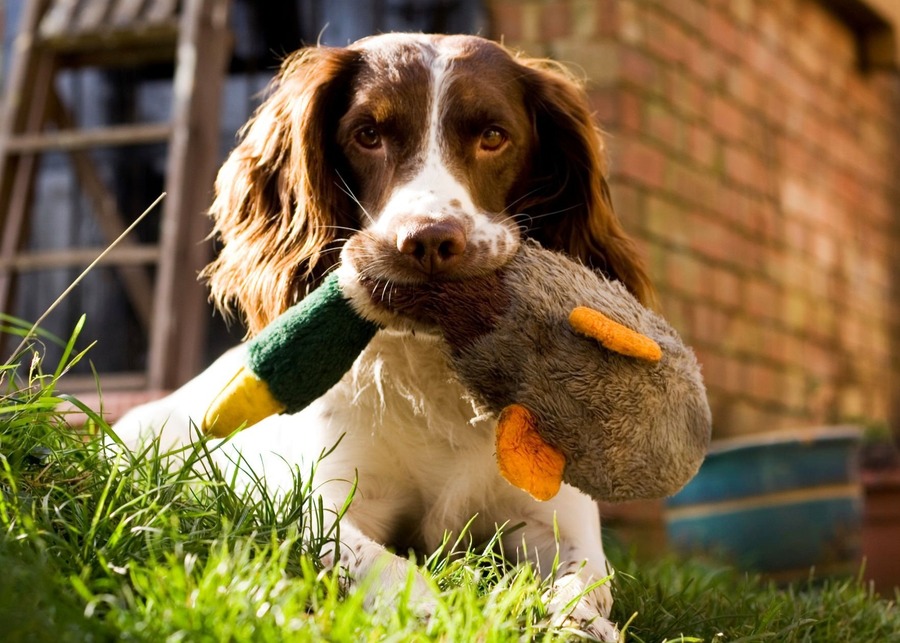Struggling to create a hunting dog toy line that stands out? You see the market potential, but standard products fail, leading to returns and brand damage. It’s a frustrating cycle.
The secret to a great hunting dog toy lies in a manufacturing-led approach. It combines material science, instinct-driven design, and rigorous engineering to create products that are not just durable, but also enhance training and build brand loyalty. It’s about engineering, not just selling toys.
As a manufacturer, I’ve spent over a decade on the factory floor, turning concepts into successful products for global brands. We’ve seen what works, what fails, and most importantly, why. This isn’t another consumer guide. This is an insider’s playbook designed for you—the brand owner, the product manager, the procurement director. I’m here to pull back the curtain and show you how to build a hunting dog toy line that not only survives the field but also builds your bottom line. Let’s dive into the details that separate a best-seller from a bargain-bin failure.
What toys are good for hunting dogs?
Tired of guessing which toys will sell? A scattered product selection confuses customers and weakens your brand. You need a clear strategy to capture the market and encourage repeat purchases.
A successful hunting dog toy line is built on three strategic pillars: Training & Skill Development, Reward & Engagement, and Durable & Consumable. This framework provides a complete solution for the dog’s needs and a clear purchasing path for the owner, maximizing your market share.
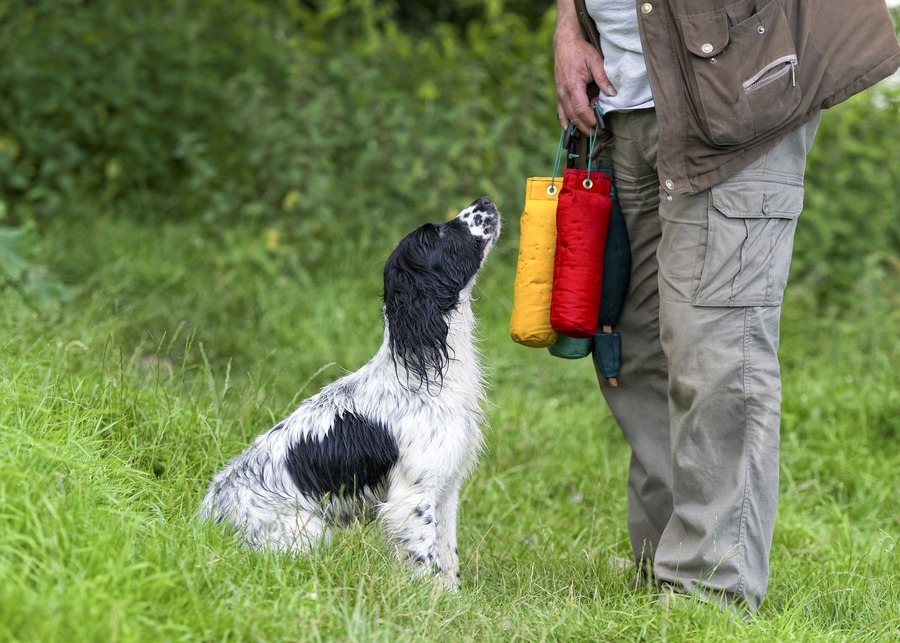
Dive deeper Paragraph:
Thinking like a brand builder, not just a retailer, is key. Instead of just listing products, we need to build a product line that tells a story and solves a complete set of problems for the dog owner. This is how we approach it with our partners.
First, Training & Skill Development toys are your foundation. These are functional tools like training dummies, scented bumpers, and specific retrieve trainers. The value here is in the design’s ability to improve a dog’s skills. For these, we focus on specific weights, textures that promote a soft mouth, and materials that hold training scents effectively.
Second, Reward & Engagement toys build the bond. These are the toys used after a successful training session, like ultra-strong tug ropes or specially designed reward balls. Here, safety and durability are paramount. The materials must be non-toxic and able to withstand intense, interactive play without failing.
Finally, Durable & Consumable toys are your profit engine. This category includes high-strength chew toys designed for solo play. They satisfy a dog’s natural urge to chew and are designed to be long-lasting but ultimately replaceable. This creates a high-demand, high-repurchase-rate product that keeps customers coming back to your brand.
By structuring your product line this way, you guide your customers through a journey, establishing your brand as the go-to authority for all their hunting dog’s needs.
| Toy Category | Primary Function | Key Design Focus | B2B Market Value |
|---|---|---|---|
| Training & Skill | Enhance specific hunting skills | Functionality, realism, scent retention | Establishes brand authority |
| Reward & Engagement | Positive reinforcement, bonding | Safety, interactive durability | Builds emotional connection to brand |
| Durable & Consumable | Solo play, chew satisfaction | Extreme durability, safety | Drives high-volume, repeat sales |
Are squeaky toys bad for hunting dogs?
You’ve heard the debate. Some trainers claim squeakers encourage dogs to bite down hard on game. This controversy makes brands hesitant, fearing they might alienate a core group of expert customers.
The issue isn’t the squeaker itself, but its lack of intelligent design. A standard, one-size-fits-all squeaker can be problematic. However, a custom-engineered squeaker—one designed for specific pressure activation, volume, or tone—turns a potential negative into a powerful training feature.
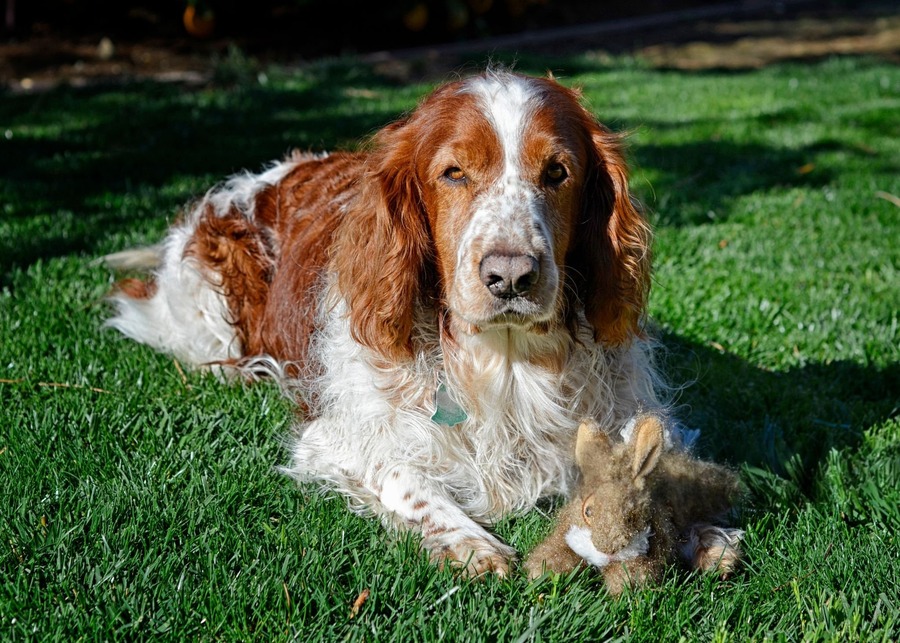
Dive deeper Paragraph:
This is where we move from being a simple factory to a product development partner. The question isn’t "yes or no," but "how can we innovate?" We had a client, a European brand known for its advanced training tools, who came to us with this exact problem. They wanted to create a reward toy that wouldn’t undermine their training philosophy.
Instead of just saying "we can add a squeaker," we asked "what do you want the squeaker to do?" We treated it as an engineering challenge. We proposed a "reward-based" squeaker. This component was designed to only activate under a specific, firm bite pressure, not a light mouthing. This taught the dog the difference between a gentle carry (like with a bird) and a "job well done" reward bite.
We developed several prototypes with varying activation pressures and sound decibels. The final product was a huge success. It allowed the brand to enter the squeaker toy market with a product that was not only unique but also reinforced their expert training credentials. This demonstrates that manufacturing depth can solve market controversies and create new product categories. It’s about having the capability to customize components, not just assemble them.
Why Standard Toys Fail Hunting Dogs?
Your brand’s reputation is on the line with every product you sell. When a standard toy meant for a household pet is given to a hunting dog, it often fails within minutes. This leads to bad reviews, costly returns, and a loss of customer trust.
Standard toys fail because they are not engineered for the high-drive, powerful jaws of hunting dogs. This failure occurs on three levels: material failure (wrong materials), design failure (unsafe shapes), and ultimately, brand failure (damaged reputation). Choosing the wrong supplier is a direct risk to your brand.
Dive deeper Paragraph:
Let’s break down this failure cascade, because understanding it is critical to protecting your brand. First is Material Failure. A standard plush toy might use simple cotton fill and low-grade polyester fabric. A hunting dog’s bite force can shred this instantly. A cheap rubber toy might use fillers that decrease tear strength, making it brittle and easy to break into swallowable chunks.
Next comes Design Failure. This is more subtle but just as dangerous. A standard toy might have glued-on eyes or poorly stitched appendages. For a powerful chewer, these are weak points that are easily torn off and ingested, creating a choking hazard. The shape itself might not be suitable for a rigorous game of fetch, being poorly balanced for throwing or difficult for a dog to pick up and carry properly.
Finally, and most importantly for you, is Brand Failure. Every time a toy fails, the customer doesn’t blame the toy’s category; they blame your brand. A single "My dog destroyed this in 5 minutes" review can deter hundreds of potential sales. When you source standard, non-specialized toys, you are actively choosing to expose your brand to this risk. A specialized manufacturer understands these failure points and engineers solutions for them from the ground up, making the product an asset to your brand, not a liability.
Key Materials for Durability & Safety?
You want to claim your toys are "tough," but what does that really mean? Without specific knowledge, you’re just using marketing words. This leaves your brand vulnerable and makes it hard to justify a premium price.
True durability comes from choosing specific, high-performance materials. It’s about using things like 1000D Cordura® canvas, multi-layered ballistic nylon, and virgin, non-toxic natural rubber. These aren’t just materials; they are a promise of safety and quality to your customer.
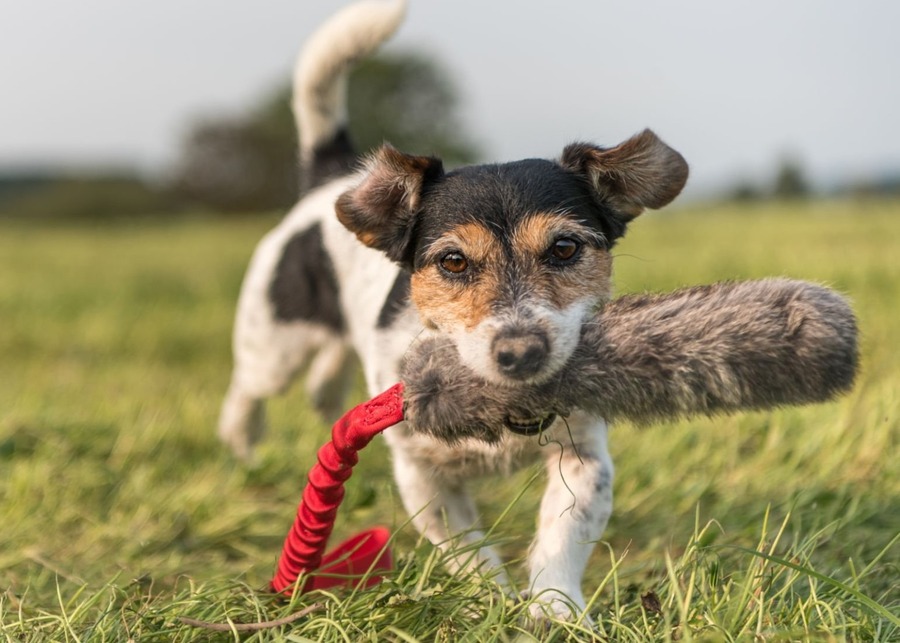
Dive deeper Paragraph:
When our partners ask us to build a durable toy, we open up our materials library. It’s a conversation about trade-offs and specific applications. We don’t just offer "canvas"; we offer options. For a fetch toy that will see a lot of abrasion from being dragged on the ground, we might recommend 1000D Cordura® or Ballistic Nylon. These materials have exceptional tear and abrasion resistance, originally designed for military applications.
For a chew or retrieve toy, we focus on A-Grade Natural Rubber. We specify "virgin" or "A-Grade" because it means the rubber is free from recycled content, fillers, or harmful chemicals like phthalates. This ensures high elasticity and tear strength, making it safer and much more durable than cheap, filled rubber.
For "soft" toys, we use a layered approach. The outer layer might be a reinforced plush, but the critical part is the inside. We often line the toy with a tear-resistant ripstop fabric. This internal shield contains the stuffing even if the outer layer is breached, preventing a mess and reducing the risk of ingestion. Providing this level of material detail to your customers builds immense trust and justifies a higher price point. It shows you’ve done your homework.
Designing for Instinct: Retrieve vs. Flush?
Are you selling a generic "dog toy" or a specialized "training tool"? Many brands miss a huge opportunity by not designing for the specific instincts of different hunting dog types. This lack of specialization makes your product forgettable.
To create a truly great product, you must design for the dog’s job. Retrievers need toys that encourage a soft mouth and float, while flushing dogs need toys that are highly visible and designed for scent work. Understanding this difference is key to creating a product that sells.
Dive deeper Paragraph:
We once worked with a client who wanted to launch a single training dummy for "all hunting dogs." The initial design was heavy and sank in water. We immediately flagged this. While it might work for some land training, it was completely useless for retriever breeds like Labradors or Spaniels who are bred to work in water. The design failed to consider the user’s instinct.
We helped them pivot. We explained the difference between designing for a Retriever versus a Flushing Dog. For the retriever line, we focused on using buoyant foam cores, ensuring the toys floated high on the water. We used a smooth, durable canvas that was easy to grip but didn’t encourage hard biting, thus promoting the "soft mouth" that is so prized.
For the flushing dog line, which targets breeds like Pointers, the focus shifted entirely. These dogs need to track and flush game from dense cover. So, we designed toys with high-contrast color patterns (using the blue-yellow spectrum dogs see best) for maximum visibility in tall grass. We also incorporated special pockets where the owner could insert scent tabs, turning the toy into a powerful scent-training tool. By understanding the dog’s job, we helped the client create two successful, specialized product lines instead of one failed, generic one.
Can Plush Toys Be Tough enough for Hunting Dogs?
Plush toys are a huge market, but most brands write them off for powerful dogs. The assumption is they can never be durable enough, forcing you to miss out on a massive product category.
Yes, a plush toy can absolutely be tough enough for a hunting dog, but only if it’s engineered, not just sewn. Through our ‘Triple Reinforcement Technology’—using an inner tear-stop liner, reinforced seam taping, and strategic double-stitching—we build plush toys that defy expectations.
Dive deeper Paragraph:
This is our specialty, and it’s where our dedicated plush toy factory truly shines. We had to solve this exact problem for a major US brand. They saw the demand but were terrified of the inevitable "destroyed in seconds" reviews. We showed them it wasn’t about the plush, but the construction.
Here’s how our Triple Reinforcement Technology works. First, we don’t just use standard stuffing. The toy’s shape is built around an internal liner of ripstop canvas. This is the first line of defense. If a tooth punctures the outer plush, this tough inner layer prevents an immediate explosion of stuffing.
Second, we focus on the seams, which are the weakest point of any plush toy. We use Kevlar®-reinforced thread and all major seams are double-stitched and then taped over on the inside. This is similar to how high-end outdoor gear is waterproofed, but we use it for strength, preventing dogs from catching a thread and pulling the seam apart.
Finally, we identify and reinforce the primary bite zones—the ears, tail, and limbs—with extra layers of fabric and bartack stitching. This process turns a simple plush toy into a robust, layered product. It allows brands to confidently offer the comfort and appeal of a plush toy with the durability their customers demand.
Common Design Flaws to Avoid?
Even with the right materials, a small design flaw can ruin a product. These mistakes can lead to safety hazards, poor performance, and negative customer feedback, undermining your investment in quality materials.
To build a truly premium product, you must avoid common but critical design flaws. This includes eliminating all glued parts, ensuring seams are hidden, balancing the toy for a proper throw, and using colors within the canine visual spectrum. These details signal true quality.
Dive deeper Paragraph:
As a manufacturer, we act as a final quality gate for our clients, and we’ve compiled a "hit list" of common flaws we see from less experienced designers. Here are the top four we always look for and correct:
- Glued Components: This is a non-starter. Glued-on eyes, noses, or decorative elements are the first things a powerful dog will rip off and potentially swallow. All features must be embroidered or integrated into the toy’s core structure.
- Exposed Seams: An external seam with loose stitching is an invitation for a dog to pick, pull, and unravel the entire toy. We ensure all structural seams are internal or use a flat-felled seam design that hides the thread from curious teeth.
- Poor Weight Distribution: A fetch toy needs to fly straight. We had a client, let’s call him David, who designed a cool-looking "bone" that was weighted heavily on one end. It was impossible to throw more than a few feet. We helped him re-engineer the internal structure to balance the weight, creating a product that actually performed in the field.
- Ignoring Canine Vision: Many brands choose colors that look good to humans, like red or green. But dogs are red-green colorblind. A red toy in green grass is nearly invisible to them. We guide our clients to use a palette of blues and yellows, which offer high contrast against most natural backgrounds, improving the play experience and reducing the chance of a lost toy.
Customizing Toys: Your Brand’s Edge?
In a crowded market, a generic product with your logo slapped on it is not enough. Without a unique selling proposition, you are forced to compete on price alone, which is a race to the bottom.
True customization is your most powerful competitive advantage. It’s not about adding a logo; it’s about co-designing a unique product that solves a specific problem. This creates brand exclusivity, justifies a premium price, and gives you a compelling story to tell your customers.
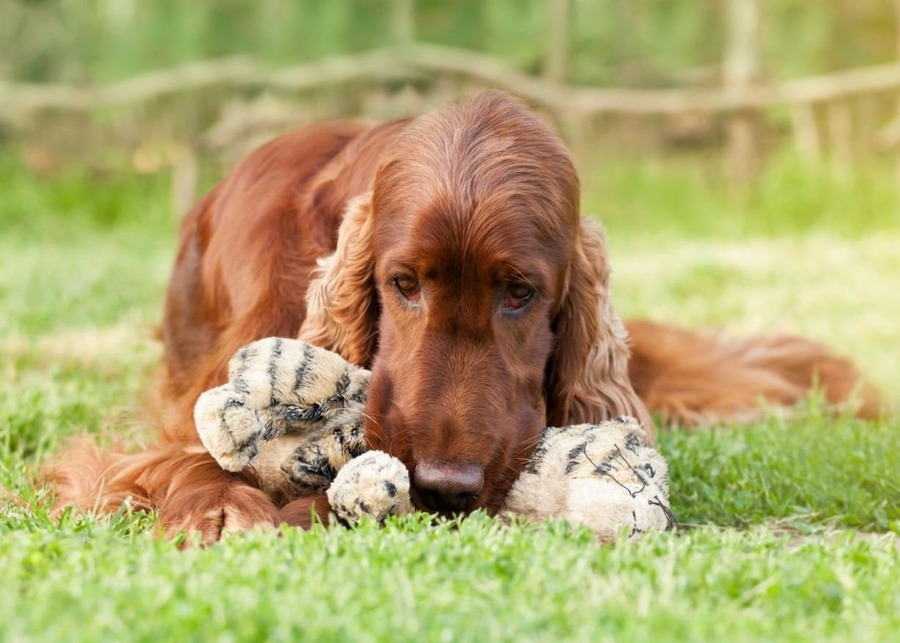
Dive deeper Paragraph:
Customization is how you move from being a reseller to being a true brand builder. I remember working with a client from Italy, Marco, who owned a small but respected brand of outdoor gear. He wanted to enter the pet space but saw that the market for standard retrieving dummies was saturated. He didn’t want to just be another "me-too" product.
He came to us with an idea. He noticed that trainers often carried multiple items: a dummy, a rope, a whistle. He asked, "Can we combine these?" This was the start of a fantastic ODM project. Our design team worked with him to create a unique multi-function training tool. It was a buoyant dummy made from durable rubber, but it featured an integrated, non-toxic rope handle for tugging and a small, molded-in cavity to store a silent dog whistle.
This wasn’t just a toy; it was a system. It was completely unique to his brand. Because of its unique design and clear benefits, he could price it 40% higher than standard dummies and it became his best-seller. This is the power of true customization. It allows you to create a product that no one else has, giving you complete control over your market position and profitability.
How to Partner with a Specialist Manufacturer?
You’re convinced that you need a specialist, but how do you identify one? Choosing the wrong partner can lead to communication breakdowns, quality control nightmares, and shipping delays, costing you time and money.
Choosing the right manufacturing partner is the single most important decision you’ll make. Don’t just look for a supplier; look for a partner who can provide transparent quality control, in-house design expertise, and integrated logistics. Their capabilities become your capabilities.
Dive deeper Paragraph:
When you’re vetting a potential partner, you need to ask the right questions. This is about looking past the slick catalogs and assessing their core capabilities. Here is the checklist we advise our prospective clients to use, whether they work with us or someone else:
- Do they have an in-house design and engineering team? Ask to speak with them. A true ODM partner has designers who can help you solve problems, not just salespeople who take orders. This is the difference between "What do you want?" and "Here’s how we can make that better."
- Can they show you their Quality Assurance (QA) process? Ask for documentation. A specialist will have a multi-point inspection process, from raw material verification to pre-shipment container loading photos. If they can’t show you this, they don’t have a real process.
- Can they handle a complex, multi-category order? This tests their supply chain management. Give them a hypothetical order with plush toys, rubber toys, and pet beds. A specialist can consolidate this seamlessly, like we do for our retail chain partners. A simple factory will struggle.
- How do they communicate? Are you assigned a dedicated, professional point of contact who is available when you are? In a global business, 24/7 support isn’t a luxury; it’s a necessity for keeping projects on track.
Finding a partner who ticks all these boxes is how you de-risk your production and build a foundation for long-term growth.
Conclusion
Building a successful hunting dog toy line requires more than just sourcing products. It demands an insider’s approach to design, materials, and manufacturing to create safe, durable, and highly effective tools for your customers.

